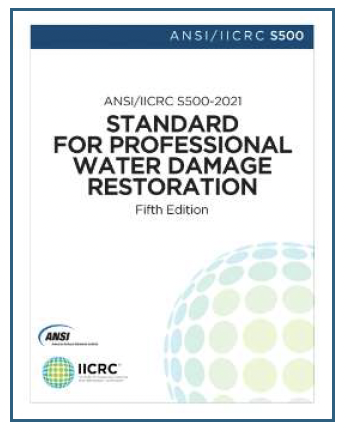Structural Restoration Workflow

Structural Restoration Workflow


Meet Ed
Instructor Ed Jones has over 30 years of experience in theindustry, has the title of MasterWater Restorer, is an Institute ofInspection Cleaning andRestoration Certification (IICRC)-approved instructor, and hasserved on the S500-2021consensus body committee todevelop the most recent standard.
The ANSI/IICRC S500-2021 Standard for Professional Water Damage Restoration states that there are five principles of the drying process. The five principles are:
- provide for the safety and health of workers and occupants
- document and inspect the project
- mitigate further damage
- clean and dry affected areas
- and complete the restoration and repairs
Documenting and inspecting the project is the development of the drying plan or scope of work, which is defined as “the itemization of services to be performed on a restoration project.” This step is critical because it is the foundation of the entire project and should be shared with all materially interested parties. It is important that the drying plan be comprehensive and detailed, including:
Identifying any safety hazards, confirmation of origin of loss, identifying date of loss vs. date of discovery, determining category of the water, identifying affected rooms & materials, separating the affected areas into drying chambers, determining class of water by drying chamber, noting pre-existing damage, what materials can be dried vs. removed & replaced, setting dry targets for the materials to be dried, providing a sketch with dimensions for all affected areas, noting what type of drying equipment is needed, how much equipment and where it should be placed initially and predicting how long it could take to dry, including once a work authorization has been signed, providing good labelled photos, psychrometric & moisture content records, including a detailed moisture map showing how the water moved through the structure and where all moisture readings were taken. Most of this can be included utilizing a mobile app, but see printed examples below:

The diagram below is provided in the S500-2021 to guide the restorer on the sequence of steps to be followed during the mitigation process based on the category of water:

A couple of things to note from this diagram is determination of the category of water is critical because if you choose categories 2 or 3 there are more steps that need to be taken vs. category 1 and costs will dramatically increase. Another point I would like to emphasize is that regardless of category of water the “drying” 12.5 doesn’t occur until after demolition and cleaning has been completed for category 1 and after demolition/remediation on categories 2 or 3. This is called the restorative drying phase and is when air movers are placed to provide continuous airflow across all wet surfaces. See definition below:
“Restorative Drying: The controlled removal of excess moisture from an indoor environment and affected materials; thereby, bringing a structure, systems, or contents to a pre-determined drying goal.” This means the restorer is utilizing air movers and dehumidifiers to help dry the structure and contents vs. just stabilizing the indoor environment with dehumidifiers when there might be some type of delay before demolition and cleaning can occur. So, air movers are only to be placed after all demolition and cleaning has been completed to prevent the potential spread of contaminants.
It is important that DAILY readings be provided even during the stabilization phase to identify indoor temperature and humidity to prevent secondary damage and to ensure the dehumidifiers are working properly. *See Getting EDucated Article on When Stabilization is Needed
In summary, documenting your drying plan is a critical step and then recording DAILY readings to validate your drying progress will not only help you get paid quickly but in the case of someone potentially making allegations of incomplete drying, causing mold, or cross-contamination concerns your documentation could save you thousands of dollars in legal defense!




